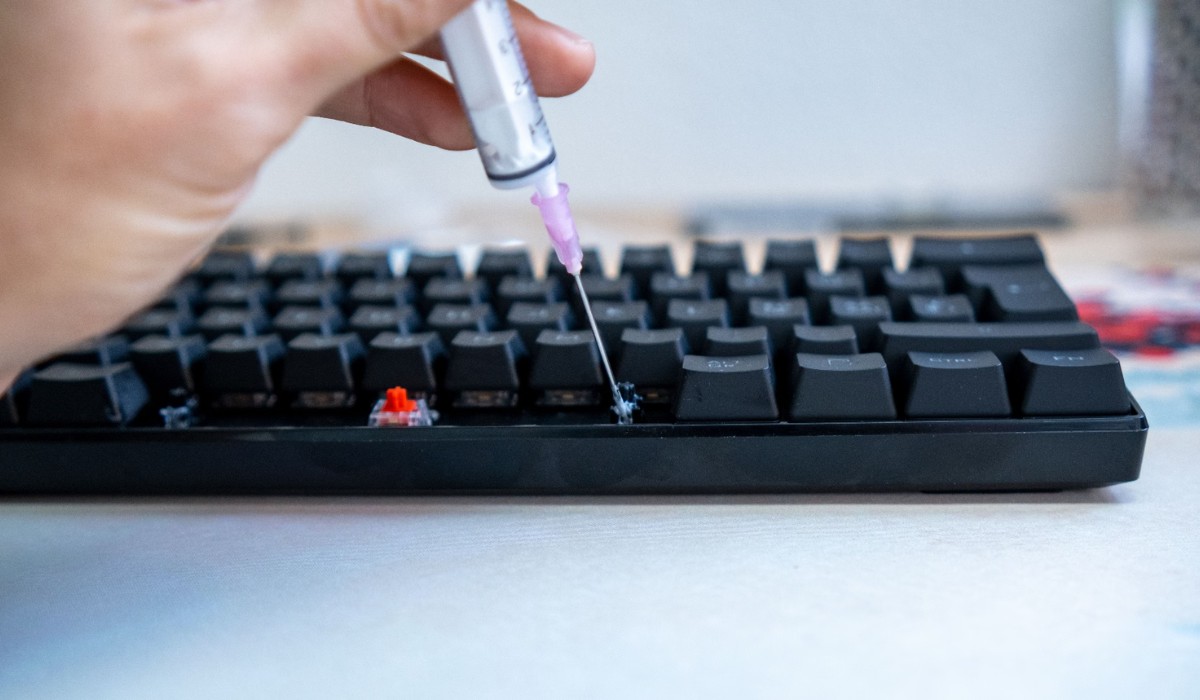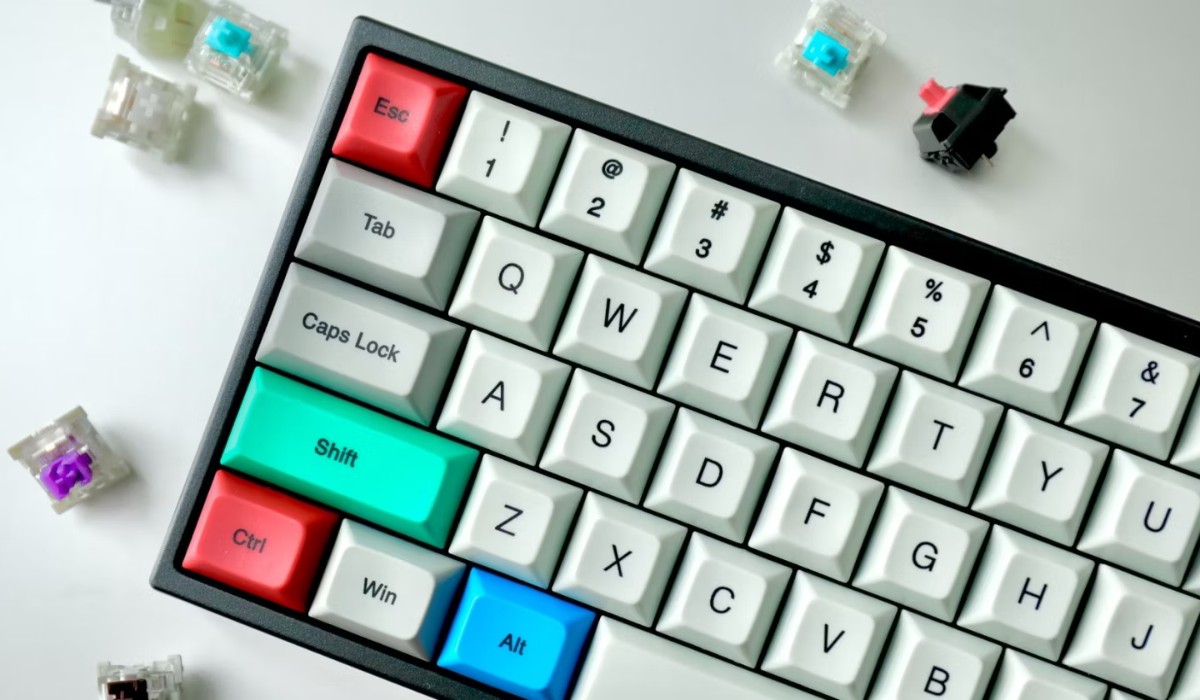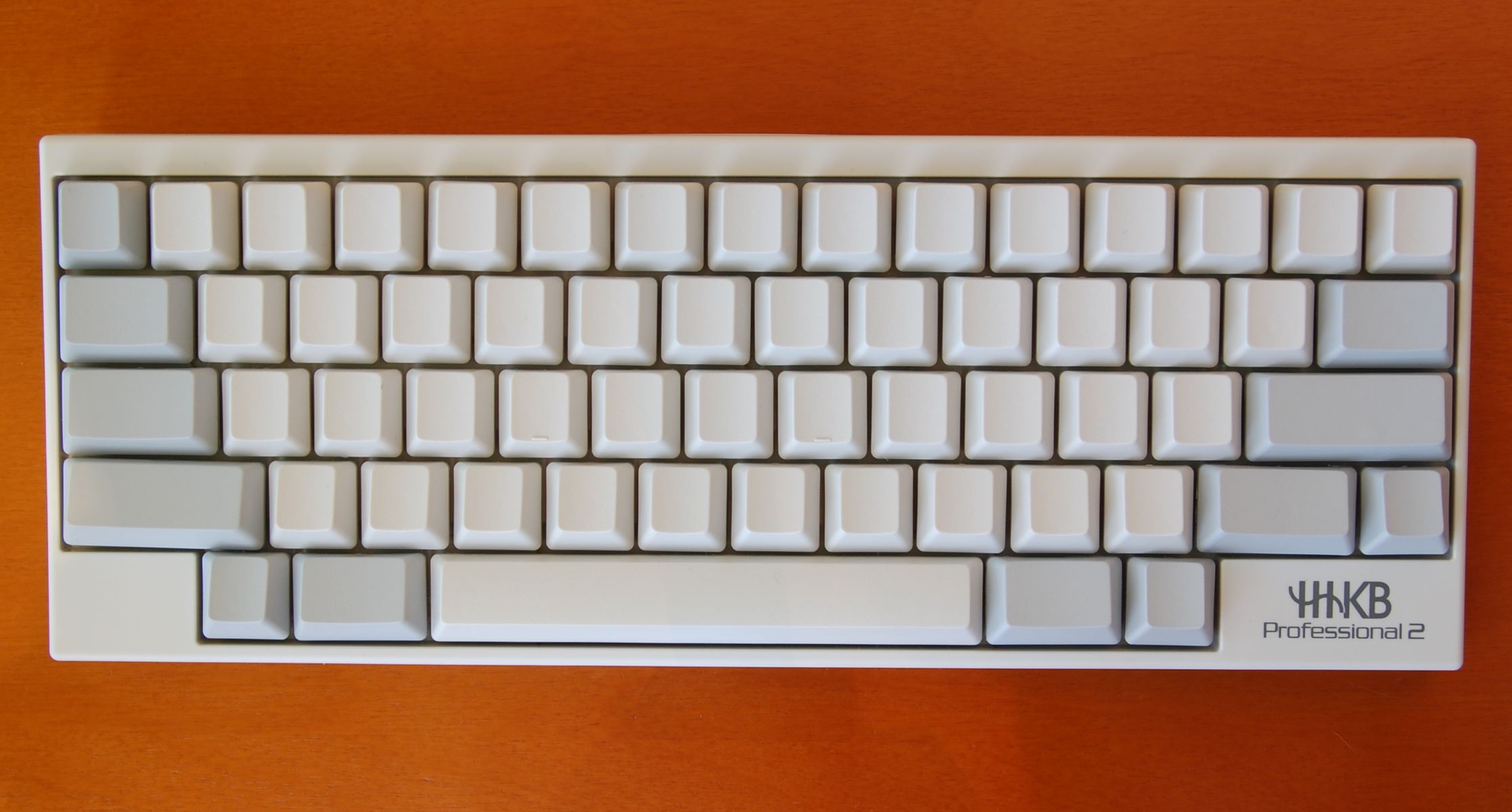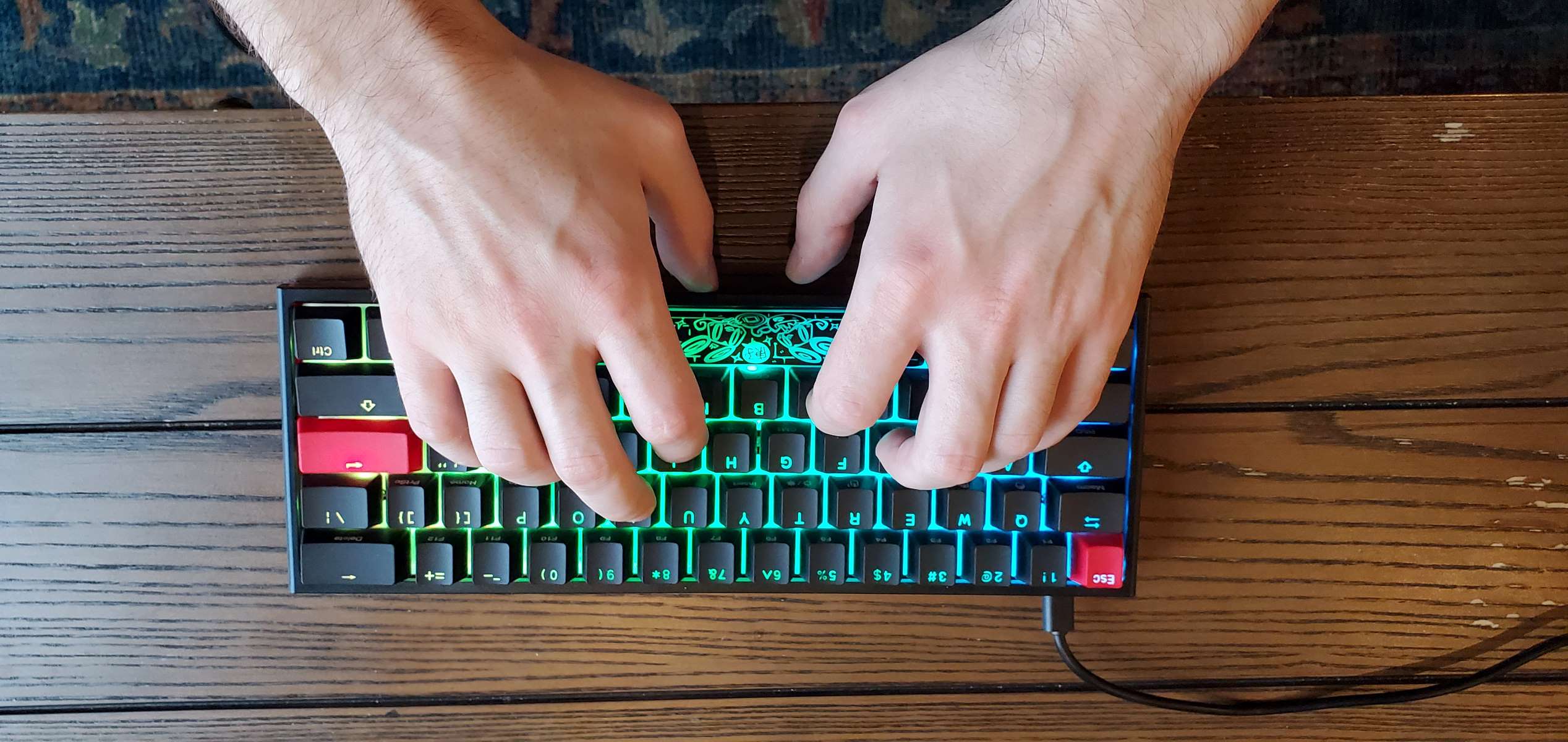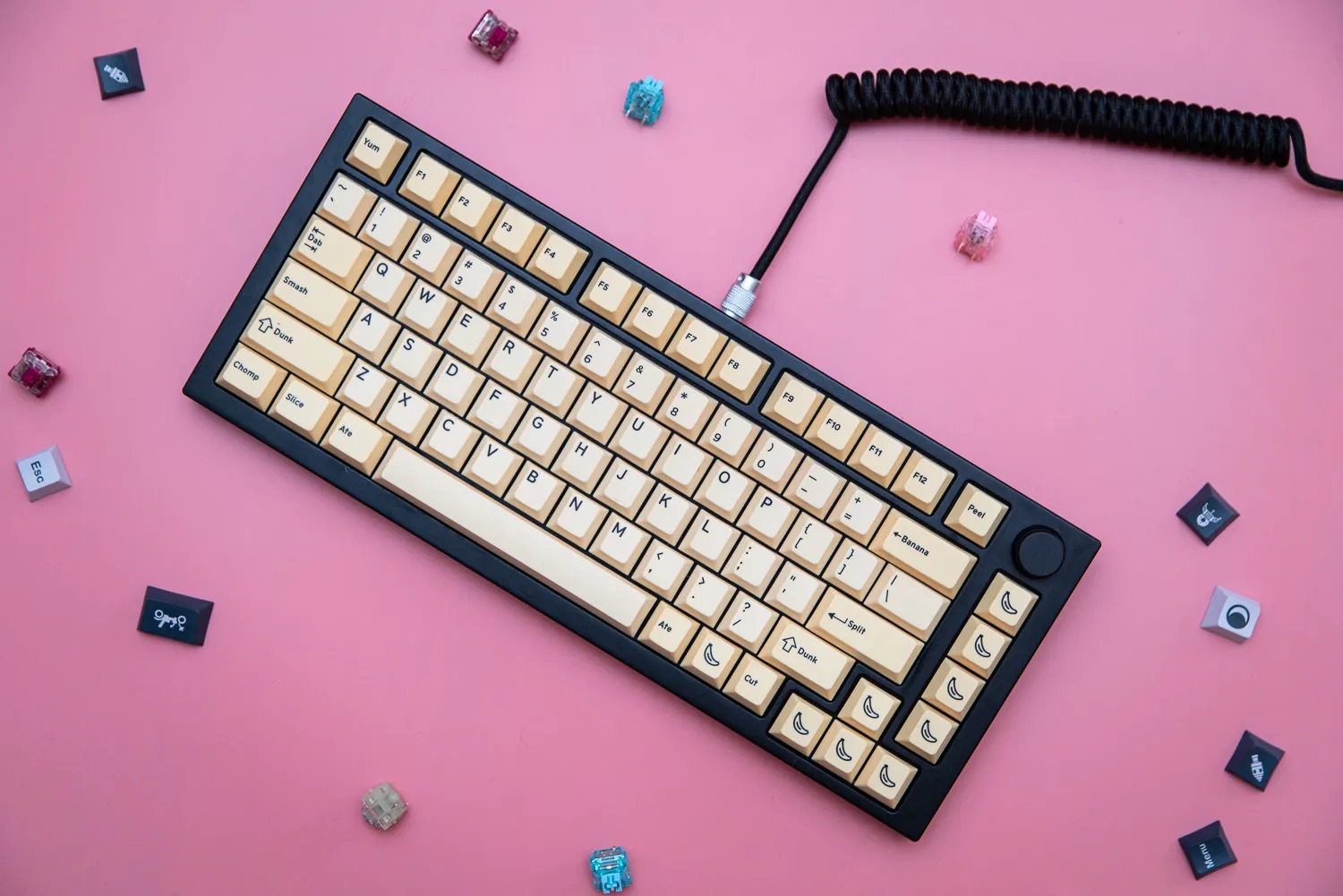Introduction
Introduction
When it comes to mechanical keyboards, enthusiasts often seek out the satisfying tactile feedback and audible clicks that these devices are known for. However, one common issue that can detract from the overall typing experience is the occurrence of "chatter." This phenomenon, characterized by the unintended repetition of a keystroke, can lead to frustration and decreased productivity for users. Understanding what causes chatter, its effects, and how to address it is crucial for anyone who relies on a mechanical keyboard for work or play.
Chatter on a mechanical keyboard can manifest in various ways, from the subtle repetition of a single keystroke to more pronounced and disruptive instances of multiple duplicate inputs. The causes of this issue can range from simple debris accumulation to more complex mechanical or electrical malfunctions within the keyboard. Regardless of the specific source, chatter can significantly impact the user's typing accuracy and overall satisfaction with their keyboard.
In this comprehensive guide, we will delve into the intricacies of keyboard chatter, exploring its origins, effects, and potential solutions. By gaining a deeper understanding of this common issue, users can equip themselves with the knowledge needed to troubleshoot and address chatter in their mechanical keyboards. Whether you are a seasoned keyboard enthusiast or a casual user seeking to optimize your typing experience, this exploration of keyboard chatter will provide valuable insights and practical tips for resolving this frustrating issue.
What is Chatter?
Chatter on a mechanical keyboard refers to the unintended repetition of a keystroke, wherein a single keypress triggers multiple inputs. This phenomenon can manifest as a mild inconvenience, with occasional duplicate characters appearing during typing, or it can become a persistent and disruptive issue, significantly impacting the user’s typing accuracy and overall experience.
At its core, chatter is a result of the keyboard registering a keypress multiple times when it should only recognize it once. This can lead to frustrating errors in text input, especially during fast-paced typing or gaming sessions where precision and reliability are paramount.
Users may notice chatter occurring across various keys on their mechanical keyboard, and the severity of the issue can vary from one instance to another. While some cases of chatter may be sporadic and easily overlooked, others can be persistent and disruptive, ultimately affecting the user’s productivity and enjoyment of the keyboard.
It’s important to differentiate chatter from intentional key repetition, which can be a feature in some keyboards for specific functions, such as gaming macros or rapid input commands. Chatter, on the other hand, is an unintended and undesirable behavior that can arise from a range of underlying causes.
Understanding the nature of chatter is essential for users to recognize and address the issue effectively. By identifying the specific symptoms and patterns of chatter, individuals can take proactive steps to diagnose and resolve this common problem, ultimately restoring the optimal functionality of their mechanical keyboards.
Causes of Chatter
Several factors can contribute to the occurrence of chatter on a mechanical keyboard, ranging from common environmental elements to internal mechanical and electrical issues. Understanding these potential causes is crucial for diagnosing and addressing the issue effectively. Here are some common culprits behind keyboard chatter:
- Debris Accumulation: Over time, dust, food particles, or other debris can accumulate within the key switches, leading to inconsistent contact and triggering unintended keystrokes. This can result in sporadic instances of chatter across different keys.
- Key Switch Degradation: The mechanical components of key switches can wear down over extended use, causing them to register multiple inputs from a single keypress. This degradation may be accelerated by aggressive typing habits or prolonged usage.
- Electrical Interference: External sources of electrical interference, such as nearby wireless devices or power cables, can disrupt the signals transmitted within the keyboard, leading to erratic key registrations and potential instances of chatter.
- Moisture or Liquid Damage: Exposure to moisture or liquid spills can compromise the internal circuitry of the keyboard, resulting in erratic behavior, including chatter. Liquid ingress can lead to corrosion and short circuits, impacting the key switches’ performance.
- Manufacturing Defects: In some cases, keyboards may exhibit chatter due to manufacturing defects, such as inconsistent switch tolerances or suboptimal electrical contacts within the key switches. These issues can manifest shortly after acquiring the keyboard or develop over time.
Identifying the specific cause of chatter in a mechanical keyboard often requires a systematic approach, involving both external inspection and internal diagnostics. By recognizing the potential sources of this issue, users can take targeted measures to mitigate or eliminate the factors contributing to keyboard chatter, ultimately restoring the keyboard’s performance and reliability.
Effects of Chatter
Chatter on a mechanical keyboard can have a range of effects, impacting the user’s typing experience, productivity, and overall satisfaction with the device. Understanding these effects is essential for users to appreciate the significance of addressing keyboard chatter and its potential implications. Here are the notable effects of keyboard chatter:
- Typing Accuracy and Speed: Chatter can compromise the user’s typing accuracy, leading to unintended duplicate characters and errors in text input. This can be particularly disruptive during tasks that require precision and attention to detail, such as writing, coding, or data entry.
- Productivity and Efficiency: The presence of chatter can impede the user’s productivity, as they may need to spend additional time proofreading and correcting text due to unintended keystroke repetitions. This can result in workflow interruptions and decreased efficiency during typing-intensive activities.
- User Frustration: Persistent instances of chatter can lead to user frustration and dissatisfaction with the keyboard, detracting from the overall typing experience and diminishing the enjoyment of using the device.
- Gaming Performance: In gaming scenarios, keyboard chatter can negatively impact the user’s gaming performance, leading to unintended commands or actions due to duplicate key registrations. This can affect gameplay precision and responsiveness.
- Hardware Longevity: Prolonged exposure to keyboard chatter can contribute to accelerated wear and tear on the key switches, potentially shortening the overall lifespan of the keyboard and necessitating premature maintenance or replacement.
Recognizing the effects of chatter underscores the importance of promptly addressing this issue to maintain optimal typing performance and user satisfaction. By mitigating the impact of chatter, users can enhance their overall typing experience, improve productivity, and prolong the longevity of their mechanical keyboards.
How to Fix Chatter
Addressing keyboard chatter requires a systematic approach to identify and resolve the underlying causes. By implementing targeted solutions, users can effectively mitigate or eliminate chatter, restoring their mechanical keyboards’ optimal functionality. Here are practical steps to fix keyboard chatter:
- Keyboard Cleaning: Begin by thoroughly cleaning the keyboard, removing any accumulated debris or particles that may be causing inconsistent key registrations. Use compressed air, keycap pullers, and gentle cleaning solutions to dislodge and remove debris from the key switches and surrounding areas.
- Key Switch Maintenance: For keyboards with removable keycaps, consider inspecting and maintaining the individual key switches. This may involve lubricating the switches, realigning components, or replacing worn or damaged switch components to restore proper functionality.
- Environmental Considerations: Minimize exposure to moisture, liquids, and excessive dust in the keyboard’s operating environment. Additionally, reduce potential sources of electrical interference, such as wireless devices or power cables, to mitigate erratic key registrations caused by external factors.
- Software Configuration: Some keyboards offer firmware or software customization options that allow users to adjust key debounce settings or update the keyboard’s firmware to address chatter-related issues. Explore available configuration options to optimize key response and minimize chatter.
- Professional Maintenance: If chatter persists despite cleaning and maintenance efforts, consider seeking professional keyboard maintenance services. Experienced technicians can diagnose and address internal keyboard issues, such as switch degradation or electrical malfunctions, to restore optimal performance.
By implementing these proactive measures, users can effectively troubleshoot and resolve keyboard chatter, ensuring a reliable and satisfying typing experience with their mechanical keyboards. Regular maintenance and environmental awareness can also contribute to preventing future instances of chatter, prolonging the keyboard’s longevity and performance.
Conclusion
Keyboard chatter, characterized by the unintended repetition of keystrokes, can present frustrating challenges for users of mechanical keyboards. Understanding the causes and effects of chatter is essential for effectively addressing this issue and restoring the optimal functionality of the keyboard.
By recognizing the potential sources of chatter, including debris accumulation, key switch degradation, electrical interference, and manufacturing defects, users can take proactive measures to mitigate these factors and minimize the occurrence of unintended key registrations.
Furthermore, acknowledging the effects of chatter, such as compromised typing accuracy, decreased productivity, and user frustration, underscores the significance of promptly addressing this issue. Whether for professional tasks, gaming, or general typing activities, maintaining a reliable and responsive keyboard is crucial for user satisfaction and overall efficiency.
Implementing targeted solutions, such as thorough keyboard cleaning, key switch maintenance, environmental considerations, software configuration, and professional maintenance services, empowers users to effectively troubleshoot and resolve keyboard chatter. By integrating these proactive measures into their keyboard maintenance routines, users can optimize their typing experience and prolong the longevity of their mechanical keyboards.
In conclusion, a proactive approach to identifying, addressing, and preventing keyboard chatter enhances the user’s overall satisfaction and productivity, ensuring an enjoyable and reliable typing experience with their mechanical keyboards. By staying informed and proactive, users can effectively mitigate the impact of chatter and maintain the optimal performance of their cherished input devices.







